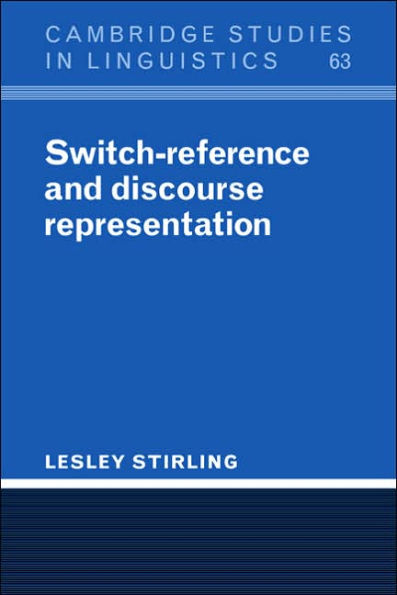In central cases of switch-reference, a marker on the verb of one clause is used to indicate whether its subject has the same or different reference from the subject of an adjacent, syntactically-related clause. In central cases of logophoricity, a special pronoun form is used within a reported speech context to indicate coherence with the source of reported speech. Lesley Stirling argues that these types of anaphoric linkage across clause boundaries cannot be adequately accounted for by Binding Theory. Her detailed examination of the two phenomena, including a case study of the Papuan language Amele, proposes an account for them which is formalized in Discourse Representation Theory, and explores how far it is possible for such an account to be compositional morpho-syntactic/semantic, while at the same time taking seriously the range of linguistic and cross-linguistic data to be explained.
1100948637
Switch-Reference and Discourse Representation
In central cases of switch-reference, a marker on the verb of one clause is used to indicate whether its subject has the same or different reference from the subject of an adjacent, syntactically-related clause. In central cases of logophoricity, a special pronoun form is used within a reported speech context to indicate coherence with the source of reported speech. Lesley Stirling argues that these types of anaphoric linkage across clause boundaries cannot be adequately accounted for by Binding Theory. Her detailed examination of the two phenomena, including a case study of the Papuan language Amele, proposes an account for them which is formalized in Discourse Representation Theory, and explores how far it is possible for such an account to be compositional morpho-syntactic/semantic, while at the same time taking seriously the range of linguistic and cross-linguistic data to be explained.
59.0
In Stock
5
1

Switch-Reference and Discourse Representation
372
Switch-Reference and Discourse Representation
372Paperback(Revised ed.)
$59.00
59.0
In Stock

Product Details
| ISBN-13: | 9780521023436 |
|---|---|
| Publisher: | Cambridge University Press |
| Publication date: | 11/24/2005 |
| Series: | Cambridge Studies in Linguistics , #63 |
| Edition description: | Revised ed. |
| Pages: | 372 |
| Product dimensions: | 5.90(w) x 8.90(h) x 1.00(d) |
From the B&N Reads Blog
